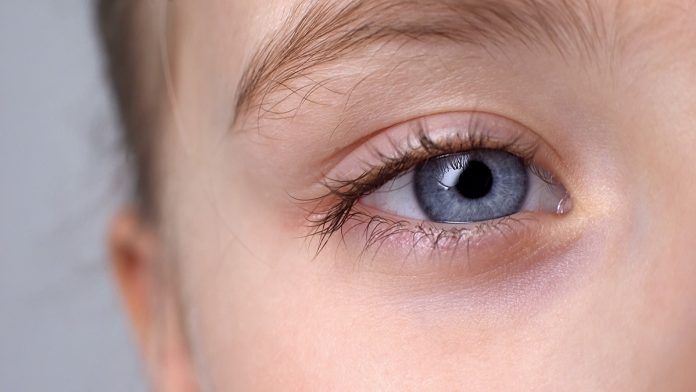Professor Heather Sheardown from McMaster University provides detail about treating vision-related conditions, including injectable, in situ gelling systems
With the ageing population and an increased incidence of age-related macular degeneration (AMD), the number of annual intraocular injections, which target wet AMD, was more than 24 million globally in 2019. These sight-saving injections of anti-vascular endothelial growth factor (anti-VEGF) drugs occur approximately monthly, with some extension possible, depending on the disease progression and the patient. AMD therapies such as these have significantly improved the prognosis for patients suffering from wet AMD, dramatically decreasing the rate of AMD induced blindness. However, even with “treat and extend” regimes, the frequency of injection of these anti-VEGF drugs is onerous for patients and presents a significant burden to healthcare systems globally.
Treating vision-related conditions
Fighting Blindness Canada reports that the direct costs of treating vision-related conditions are the highest of any disease category, with similar impacts in most of the developed world, in large part the result of these frequent injections. In addition to being less of a healthcare and patient burden, the efficacy of these anti-VEGF drugs would be significantly enhanced by the ability to provide a longer duration of action with a therapeutic dose of the drug. New anti-VEGF therapies, either recently approved or in clinical trials, can in some cases extend the duration between treatments to three months or more. However, drug delivery methods have significant potential to further increase this duration, while providing patients with therapeutic doses of drugs to provide better management of these devastating conditions.
Solid delivery methods have a longer history of use in the eye with various systems having been approved or in clinical trials. A promising delivery system for protein drugs that is currently in phase 3 trials is the port delivery system (PDS), originally a product of Forsight Vision4 and currently being developed through Genetech, for the delivery of ranibizumab. This refillable, non-degradable implant is designed to deliver the anti-VEGF drug for periods of up to six months. The delivery system is implanted in the pars plana beneath the conjunctiva using standard retinal surgery techniques. Refilling of the device can occur in the office as needed (Chen and Kaiser 2020). The system showed only minor adverse effects in early clinical trials while the Phase II trial demonstrated that the time to refill, based on clinical signs, was longer for higher concentrations of ranibizumab in the delivery system. An ongoing Phase III trial is expected to be completed by January 2022, with data to date suggesting that this method represents a promising alternative to month injections. However, the need for implantation remains a limitation of this system. An insertable system developed by Ripple Therapeutics, currently being evaluated clinically has a great deal of promise. The system does not use a polymer; rather the drug is crosslinked to form the delivery system, leading to long-term, zero order drug release. The system has been developed to deliver dexamethasone with excellent preclinical data in a posterior uveitis model (Battiston et al. 2021).
In situ gelling systems
Injectable, in situ gelling systems have significant promise for overcoming some of the limitations of an implantable system. The polymers used in these systems are liquid at ambient conditions, but form gels when exposed to the conditions of the back of the eye. Typically hydrogels, both synthetic and natural, polymers can gel in response to a variety of stimuli, including ionic strength, the presence of specific ions, temperature, chemistry or light (Cooper and Yang 2019). The hydrogel nature of the materials can be advantageous for the delivery of anti-VEGF proteins, assisting with the long-term maintenance of protein activity. The main limitation is that these gels are not ready for clinical application, but do hold significant promise for the future.
Among the polymers used for in situ gelling systems, poly(ethylene glycol) (PEG) based systems may have the greatest promise. PEG has been widely used as a biomaterial in a host of applications; in addition to good protein compatibility and excellent in vivo biocompatibility, PEG has moderate thermal responsiveness. Copolymers of PEG with poly(lactic-co-glycolic acid) have been shown to gel at a temperature of approximately 30oC, allowing them to be injected subconjunctivally. There was no adverse response to the gels, either in the eye or when placed on the ocular surface (Chan et al. 2019). Release durations of up to 28 days were noted.
A chemically crosslinkable degradable poly (oligoethylene glycol) (POEGMA) based system has particular promise for long-term posterior segment drug delivery (Bakaic et al. 2018; Bakaic et al. 2017; Urosev et al. 2019), although even with this system, release of proteins was two to three months in duration rather than the desired six months. Another promising system, particularly for low molecule weight hydrophobic drugs, is based on a co-polymer of PEG and Vitamin E. The system gels when placed in contact with an aqueous system, is safe, tolerable and degradable, and has been shown to release for prolonged periods (Zhang et al. 2016), although the release of proteins was not evaluated.
The thermally responsive polymer, poly (N-isopropyl acrylamide) (NIPAAM) has also been a widely examined material for creating injectable, in situ gelling materials for drug delivery to the eye. The lower critical solution temperature (LCST) of this polymer of approximately 30oC, can be modified through polymerization with various co-monomers. Copolymers of NIPAAM with various hydrophilic and hydrophobic monomers have been used to incorporate polymer degradation and to improve release kinetics in ophthalmic and other applications. Recently, the creation of injectable semi-interpenetrating networks by mixing poly (NIPAA) with hyaluronic acid has been shown to prolong drug release (Egbu et al. 2018). However, even with these gels, the release of more than 40% of the protein was observed at 10 days.
The addition of poly (ethylene glycol) (PEG) into the polymers slowed the release to some extent, but release periods of six months would not be possible with these gels and additional modification would be required. Similar results have been shown by other groups (Fitzpatrick et al. 2020; Fitzpatrick et al. 2012; Prosperi-Porta, Muirhead, and Sheardown 2017), despite modification with a host of different components to impart degradability and transparency. Among the most promising of the PNIPAAM based systems involves PGLA microsphere loaded drug particles which are incorporated into the thermoresponsive PNIPAAM based gel (Kim et al. 2020; Liu et al. 2019; Liu et al. 2020). The gel is injectable using a 28 g needle. Degradability of the gel was ensured through crosslinking with PGLA and PEG based crosslinker. More than six months of efficacy in a laser-induced choroidal neovascularization (CNV) model was shown with this gel.
Looking ahead
While solid delivery systems have a longer history of use in ocular applications, the acceptability of intraocular injections as well as the potential to overcome the need for monthly or semi-monthly injections, makes injectable delivery systems a potentially attractive option. These systems, for the most part, are unable to sustain the desired six months of drug release, but it has been shown that with modification, six months of the release of drug at an efficacious dose is possible. These developments may lead to better management of posterior segment diseases in the future, and to better patient outcomes.
References
Bakaic, E., N. M. B. Smeets, M. Badv, M. Dodd, O. Barrigar, E. Siebers, M. Lawlor, H. Sheardown, and T. Hoare. 2018. ‘Injectable and Degradable Poly(Oligoethylene glycol methacrylate) Hydrogels with Tunable Charge Densities as Adhesive Peptide-Free Cell Scaffolds’, Acs Biomaterials Science & Engineering, 4: 3713-25.
Bakaic, E., N. M. B. Smeets, O. Barrigar, R. Alsop, M. C. Rheinstadter, and T. Hoare. 2017. ‘pH-Ionizable in Situ Gelling Poly(oligo ethylene glycol methacrylate)-Based Hydrogels: The Role of Internal Network Structures in Controlling Macroscopic Properties’, Macromolecules, 50: 7687-98.
Battiston, Kyle, Ian Parrag, Matthew Statham, Dimitra Louka, Hans Fischer, Gillian Mackey, Adam Daley, Fan Gu, Emily Baldwin, Bingqing Yang, Ben Muirhead, Emily Anne Hicks, Heather Sheardown, Leonid Kalachev, Christopher Crean, Jeffrey Edelman, J. Paul Santerre, and Wendy Naimark. 2021. ‘Polymer-free corticosteroid dimer implants for controlled and sustained drug delivery’, Nature Communications, 12: 2875.
Chan, P. S., J. W. Xian, Q. Q. Li, C. W. Chan, S. S. Y. Leung, and K. K. W. To. 2019. ‘Biodegradable Thermosensitive PLGA-PEG-PLGA Polymer for Non-irritating and Sustained Ophthalmic Drug Delivery’, Aaps Journal, 21.
Chen, E. R., and P. K. Kaiser. 2020. ‘Therapeutic Potential of the Ranibizumab Port Delivery System in the Treatment of AMD: Evidence to Date’, Clinical Ophthalmology, 14: 1349-55.
Cooper, R. C., and H. Yang. 2019. ‘Hydrogel-based ocular drug delivery systems: Emerging fabrication strategies, applications, and bench-to-bedside manufacturing considerations’, Journal of Controlled Release, 306: 29-39.
Egbu, R., S. Brocchini, P. T. Khaw, and S. Awwad. 2018. ‘Antibody loaded collapsible hyaluronic acid hydrogels for intraocular delivery’, European Journal of Pharmaceutics and Biopharmaceutics, 124: 95-103.
Fitzpatrick, S. D., M. A. J. Mazumder, B. Muirhead, and H. Sheardown. 2012. ‘Development of injectable, resorbable drug-releasing copolymer scaffolds for minimally invasive sustained ophthalmic therapeutics’, Acta Biomaterialia, 8: 2517-28.
Fitzpatrick, S., J. Mazumder, D. Baek, X. Zhao, H. Wang, L. Fitzpatrick, S. Boyd, and H. Sheardown. 2020. ‘Optically transparent thermally gelling drug delivery scaffold for minimally invasive posterior segment drug deliver’, Journal of Biomedical Materials Research Part A, Submitted.
Kim, S., J. J. Kang-Mieler, W. Q. Liu, Z. Wang, G. Yiu, L. B. C. Teixeira, W. F. Mieler, and S. M. Thomas. 2020. ‘Safety and Biocompatibility of Aflibercept-Loaded Microsphere Thermo-Responsive Hydrogel Drug Delivery System in a Nonhuman Primate Model’, Translational Vision Science & Technology, 9.
Liu, W. Q., B. S. Lee, W. F. Mieler, and J. J. Kang-Mieler. 2019. ‘Biodegradable Microsphere-Hydrogel Ocular Drug Delivery System for Controlled and Extended Release of Bioactive Aflibercept In Vitro’, Current Eye Research, 44: 264-74.
Liu, W. Q., A. P. Tawakol, K. M. Rudeen, W. F. Mieler, and J. J. Kang-Mieler. 2020. ‘Treatment Efficacy and Biocompatibility of a Biodegradable Aflibercept-Loaded Microsphere-Hydrogel Drug Delivery System’, Translational Vision Science & Technology, 9.
Prosperi-Porta, G., B. Muirhead, and H. Sheardown. 2017. ‘Tunable release of ophthalmic therapeutics from injectable, resorbable, thermoresponsive copolymer scaffolds’, Journal of Biomedical Materials Research Part B-Applied Biomaterials, 105: 53-62.
Urosev, I., H. Dorrington, N. Muzzin, R. Alsop, E. Bakaic, T. Gilbert, M. Rheinstadter, and T. Hoare. 2019. ‘Injectable Poly(oligoethylene glycol methacrylate)-Based Hydrogels Fabricated from Highly Branched Precursor Polymers: Controlling Gel Properties by Precursor Polymer Morphology’, Acs Applied Polymer Materials, 1: 369-80.
Zhang, J. F., B. Muirhead, M. Dodd, L. N. Liu, F. Xu, N. Mangiacotte, T. Hoare, and H. Sheardown. 2016. ‘An Injectable Hydrogel Prepared Using a PEG/Vitamin E Copolymer Facilitating Aqueous-Driven Gelation’, Biomacromolecules, 17: 3648-58.
Please note: This is a commercial profile
© 2019. This work is licensed under CC-BY-NC-ND.








